If you have just started using mind maps, it’s ideal to start with a simple mind map example to optimize your ideas.
Whether you create a mind map in any way, strong connections between branches and central points need to be ensured. That’s why we will share several basic templates to support your mindmap-designing process below.
In this blog, let’s check out the 7 basic elements to create simple mind map examples for students. If so, it’s time to start your experience with us!
Table of Contents
Why Should You Prefer A Simple Mind Map Example?
The simple mind map example is a sample model, requiring you to express how ideas flow into subtopics most simply. It means that you don’t need to use too much verbal or abstract in your mindmap model. And, of course, keep in mind that collecting knowledge and creating ideas is also important.
When you deliver a simple-structure mind map, it’s easy to follow your ideas in most of the plans. To attain that, you need to have a strict idea-clarifying process to get the best points of view for your mind map. Below are 2 common situations you should use mind mapping:
- Summary task requirements: To make the complex problem easy to understand, it’s great to use mind maps. With simple symbols and short terms, you can summarize all of the requirements within a few steps.
- Present ideas to others: Whenever to present your ideas to stakeholders, a simple format of mind mapping should be encouraged. This can help you easily keep the attention of others during your performance.
7 Elements Of Mind Map Examples To Promote Ideas
Below are 7 important elements contributing to a simple mind map example to help you to display your ideas effectively:
#1. Central theme
You need to put your central point in the middle of a blank page. The point can be the subject, the title, or even a particular issue. Due to using one point to express your idea, it seems difficult to understand in some situations. To help you have a clear evaluation of the central theme, let’s follow our typical example below:
When you think about a birthday party, right, you can draw the image of “a beautiful gift” or “a colorful bunch of balloons.” For many people, they can understand that you want to talk about “birthday”, however, some will not know what you mean. That’s why you should use additional elements to express your ideas.
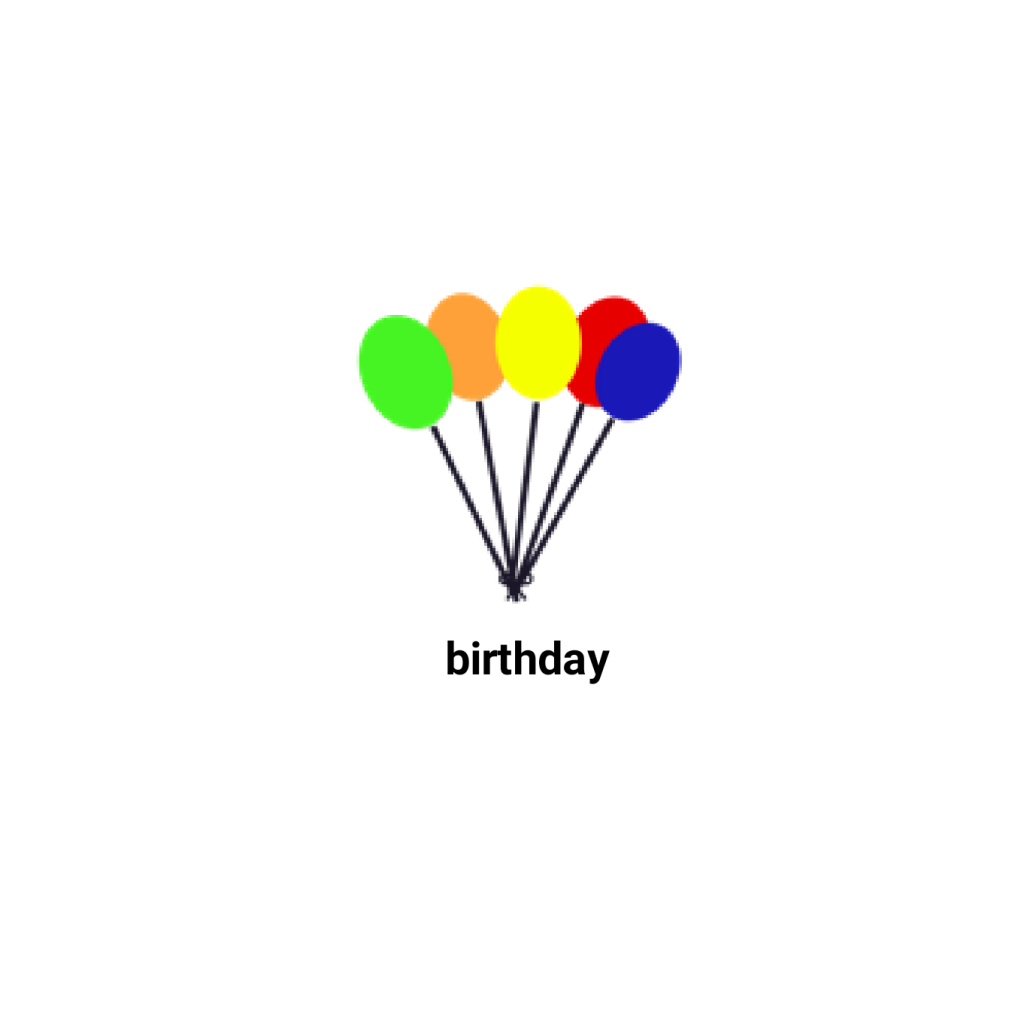
#2. Associations
From the central point, you start drawing associations directly to create the first-level associations. After that, the second and third levels will be created one after another in a proper order. When using associations, it’s important to operate your brain depending on association and imagination. This is especially effective in supporting your thinking and reminding you of anything.
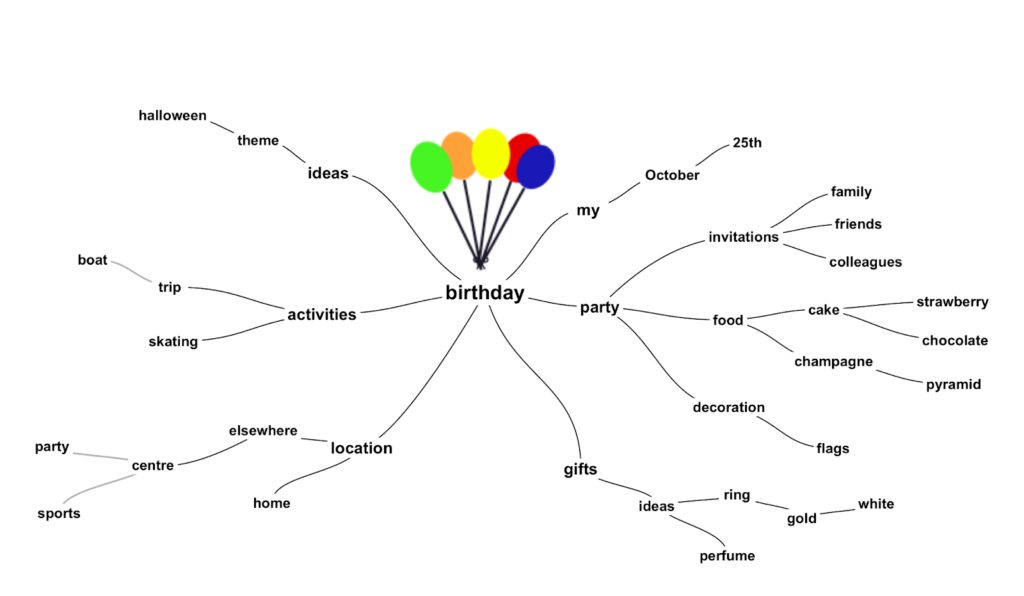
#3. Curved lines
Another element in the simple concept map example is curved lines. This format is similar to how to throw an association mind map but requires you to optimize with the curved lines. Normally, our brain prefers curves-designed elements; thus, a curved line model seems too easy to follow.
#4. Keywords
Instead of using long sentences or abstracts, you need to create main keywords to create connections among mind map levels. We recommend you write a single word to display the relevant point to optimize your mind maps easily. Besides that, this can help you to reach more clarity, freedom, and creativity.
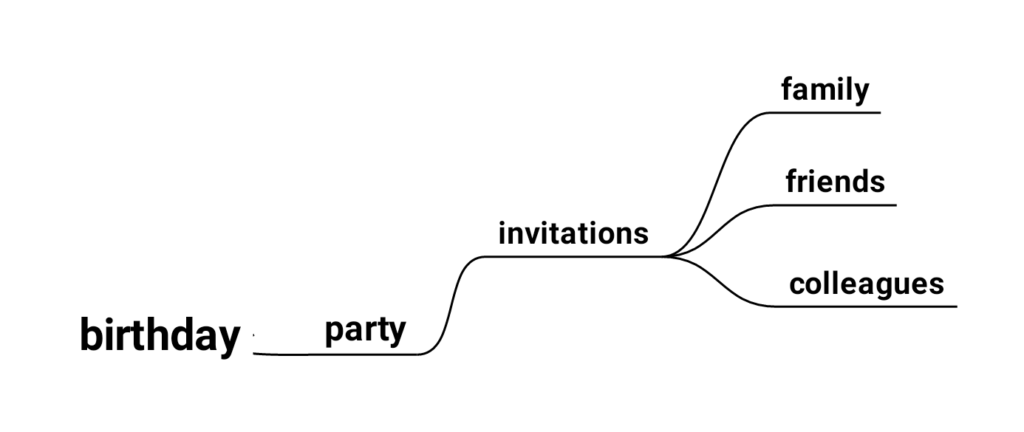
#5. Proximity
In the simple mind map example, the compatibility of the word and curved-line length is also important to highlight the role of your points of view. We mean that if the proximity is closer, the association level might be stronger and vice versa. However, many people do not pay too much attention to this issue.
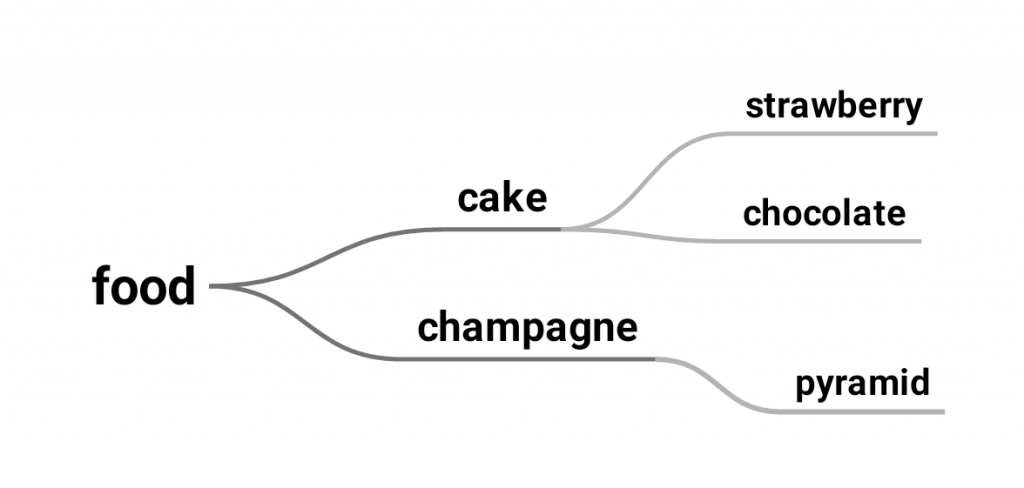
#6. 7 Associations
When building the associations for your mind map, remember that you should only grasp about a maximum of 7 to display your ideas. If there are more associations than this level, the model might be challenging to follow.
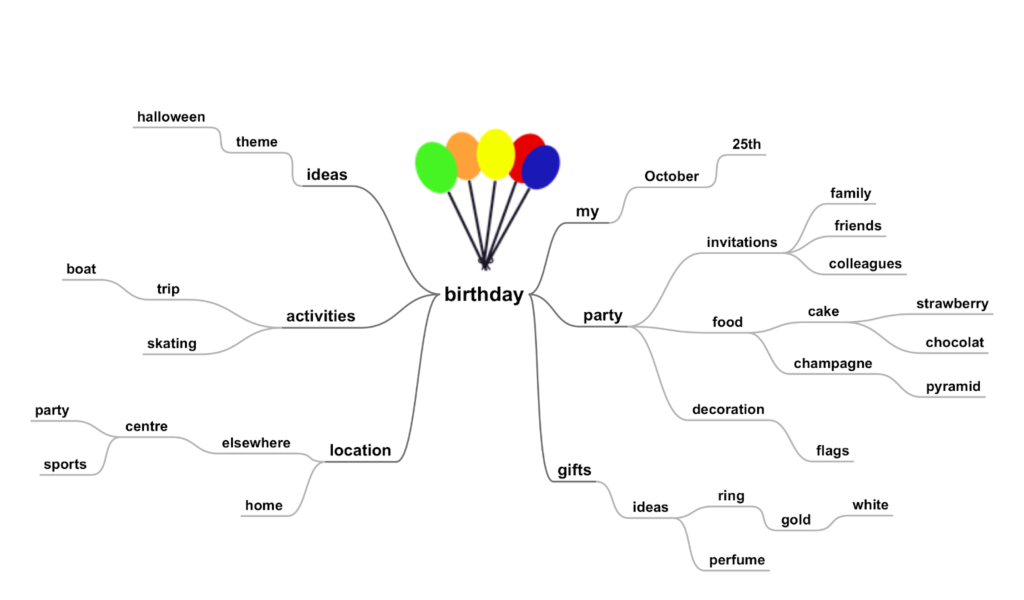
#7. Images and colors
The final element in the easy mind map example is colors and images. Once you learn how to express elements with colors visually, of course, your model will be attractive in others’ sight. For images, don’t use too much. In case some terms seem to be difficult to understand, it’s ideal to use images to give your audience a clearer evaluation.
Frequently Asked Questions
How do you make a simple mind map?
To make a simple mind map, you need to follow the sequence below:
Step 1: Begin the main point of view
Step 2: Add branches to illustrate the main concept
Step 3: Consider the connections among subtopics
Step 4: Add colors and images
What are examples of mind maps?
If you want to find more about mind map examples, don’t miss the following templates, including note-taking maps, group project maps, presentation maps, and simple maps. Besides that, let’s consider other samples to use in a business, like business plans, research, time management, or career planning maps.
What 3 things must a mind map have?
When designing a mind map, you must include 3 elements below:
– A central topic in the middle
– Branches to connect subtopics (relevant points of view)
– Use keywords, images, and colors to display
What are the 7 steps to creating a mind map?
Only with the 7 following steps you can easily attain a perfect mind map design:
Step 1: Brainstorm your main idea or subject
Step 2: Launch an impressive image to draw attention
Step 3: Make your map colorful properly
Step 4: Create strong connections among elements
Step 5: Create curved branches to easily follow
Step 6: Keep your point of view in a single word
Step 7: Replace words with images if necessary
Final thoughts
Our blog has just introduced the simple mind map example, together with its basic elements. Whenever using this concept, you need to ensure to have the elements above to optimize your map’s final performance. Besides that, you can use other models of mind mapping to display your ideas.
Check out top tips to host your brainstorming session better with brainstormingidea.com!

